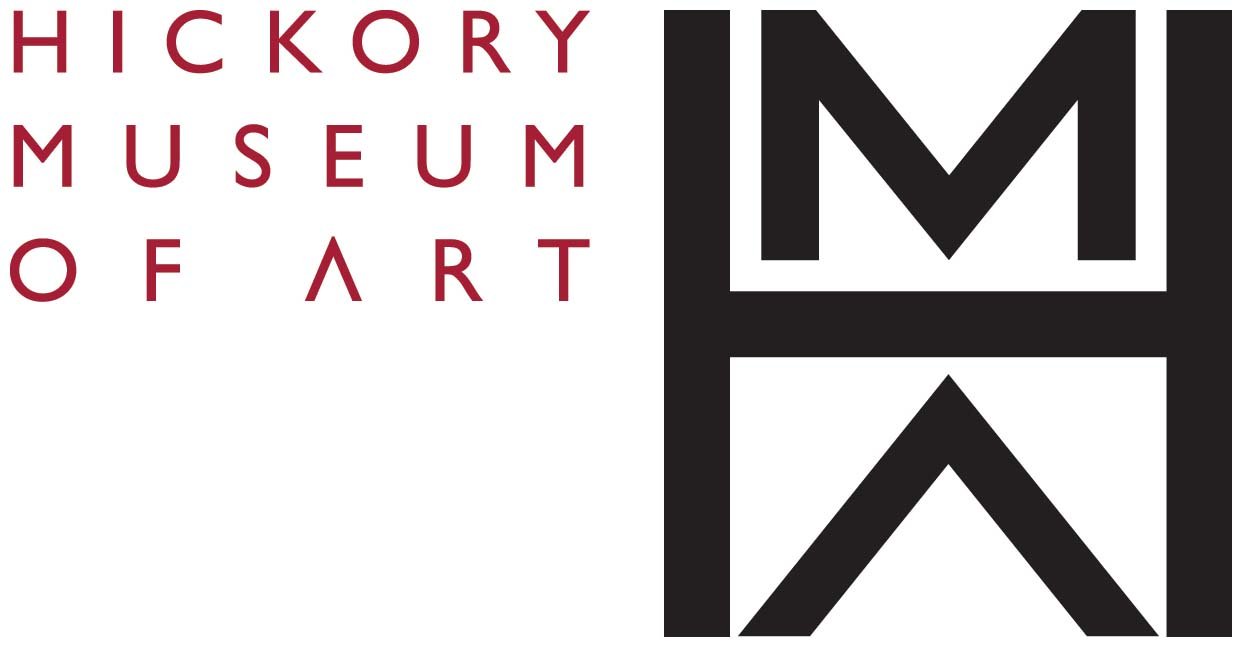Virgil Ortiz
March 1, 2025 - August 31, 2025
Entrance, Shuford & Coe Galleries
Opening Celebration
Saturday, March 1 | 7 PM
Ortiz adds the finishing strokes to Po’pay, honoring ancestral memory through art.
About the Artist
One of the most revolutionary potters of his time, Virgil Ortiz’s works have been exhibited in museum collections worldwide, including the Design Museum Den Bosch, Fondation Cartier pour l’Art Contemporain, Triennale Milano, Smithsonian Institution, Denver Art Museum, Lowe Art Museum in Miami, and the Autry Museum in Los Angeles. His latest exhibition, I AM: Indigenous Ancestral Memory at Hickory Museum of Art, is a testament to his global influence and visionary artistry.
Ortiz, the youngest of six children, grew up in a creative environment in which storytelling, collecting clay, gathering wild plants, and producing figurative pottery was part of everyday life. His grandmother Laurencita Herrera and his mother, Seferina Ortiz, were both renowned Pueblo potters and part of an ongoing matrilineal heritage. “I didn’t even know it was art that was being produced while I was growing up,” he remembers. Ortiz keeps Cochiti pottery traditions alive but transforms them into a contemporary vision that embraces his Pueblo history and culture and merges it with apocalyptic themes, science fiction, and his own storytelling.
Ortiz describes Tahu:
Tahu is purposely blinded by the oppressors for her combat prowess. She recruits a ‘spirit army’ and relentlessly battles the enemy [the colonial oppressors]. Tahu is a Pueblo superhero. Her example leads young people to seek the truth and defeat their fear. Tahu is inspired by and honors Pueblo women, including my late mother. Women keep the stories of our people, our traditions, and ceremonies alive. Our mothers teach us to face adversity with a positive outlook. We have endured because we face our fears, both real and imagined.
About the Exhibition
Cochiti Pueblo artist Virgil Ortiz continues his REVOLT 1680/2180 saga at Hickory Museum of Art with a brand new chapter. The artist draws inspiration from the most successful Indigenous uprising against a colonizing power in North American History, the 1680 Pueblo Revolt. Ortiz keeps Cochiti pottery traditions alive but transforms them into a contemporary vision that embraces his Pueblo history and culture and merges it with apocalyptic themes, science fiction, and his own storytelling.
Virgil Ortiz brings his narrative to life at HMA through immersive projection and sound, augmented reality, traditional Cochiti pottery, monumental contemporary pottery, and surprises being debuted at our Museum. This exhibition encourages repeat visitation as you engage with the story and meet the rebellion’s protagonists.
Ortiz has developed 19 groups of characters that represent the 19 Pueblos that still remain. HMA’s storyline highlights Tahu, leader of the Blind Archers. The beautiful, evocative Tahu reflects the strength, power, and resilience of the Pueblo women.
Catawba Nation
March 1, 2025 - August 31, 2025
Third Floor Mezzanine Gallery
Opening Celebration
Saturday, March 1 | 7 PM
Eric Canty, Vase, Hickory Museum of Art Collection, Museum purchase, 2016.
Exhibition Features:
• Catawba River that “flows” through the gallery
• 13 larger-than-life portraits of Catawba Nation members by photographer Randy Bacon, accompanied by their first-person stories
• Catawba pottery by Nation members continuing the tradition
• HMA Collection Spotlight on Eric Canty
Photograph of Grace Richey. © Randy Bacon
The Catawba have lived on their ancestral lands along the banks of the Catawba River dating back at least 6,000 years. Before contact with the Europeans it is believed that the Nation inhabited most of the Piedmont area of South Carolina, North Carolina and parts of Virginia. Early counts of the Catawba people made by Spanish explorers estimated the population of the tribe at the time as between 15,000-25,000. After settlers arrived in the area, two rounds of smallpox decimated the tribe’s numbers, and by 1849 the once large group was down to under 100 citizens. Now there are currently over 3,300 enrolled members of the Nation. The Catawba have a long history and a rich culture that lives on today.
An unbroken chain of pottery production has helped preserve a cultural identity that was nearly lost after European settlement. Traditionally, women made pottery; but when the population declined so severely, everybody had to make pottery. This activity helped maintain community traditions and is now one of the purest folk art forms in this country.
Utilizing clay dug near the Catawba River, the Catawbas’ methods of production are nearly unchanged since the Woodland (1000 B.C.E.–600 C.E.) and Mississippian (600–1600 C.E.) periods. It is the oldest continuously practiced traditional art form found east of the Mississippi River. This unbroken tradition helped preserve the cultural identity of the Catawba and restore their Federal status that was taken during the Termination Act.
Catawba pottery is handbuilt using traditional coiling techniques. Handles and legs are attached by riveting, pushing the attachment through a hole pierced in the pot. This technique creates features that will not break-off easily. Once pots are air dried, the surface is scraped even with a piece of bone, antler, or a knife and then burnished to a shine with a smooth river stone (or other favorite object). Decoration, if desired, is then incised into the surface. Firing is often in two stages. A fire is built in a pit and the pots placed near it to heat. Then the warmed pots are placed in the pit to complete the process. Smoke from the burning wood creates distinctive patterns on the surfaces of the pots. Glazes are not used.












